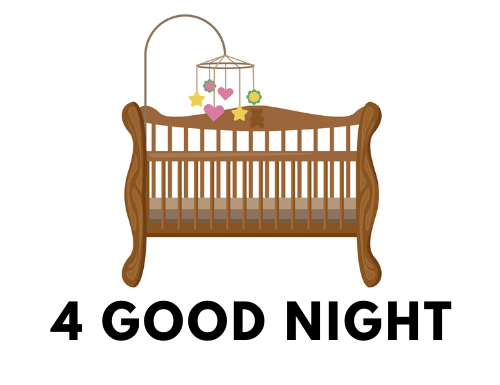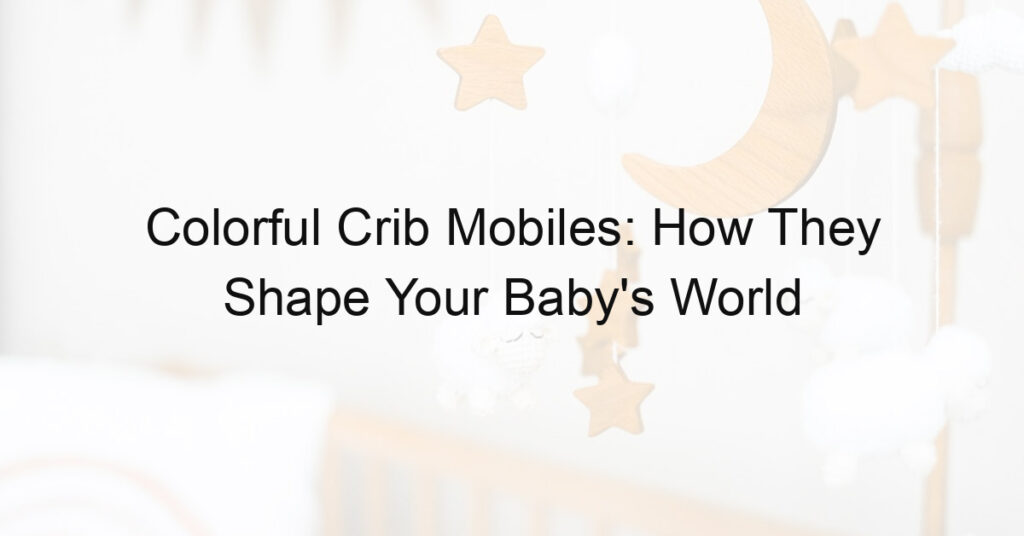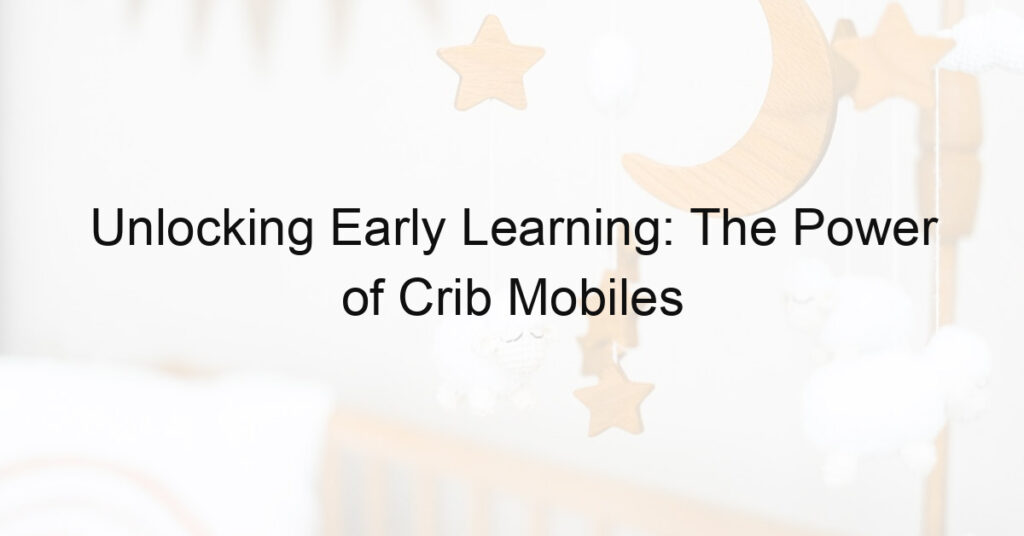When it comes to preparing for a new baby, one of the most important items on your list is a safe and comfortable place for your little one to sleep. You may be wondering: mini crib vs crib?
While both options have their benefits, there are some key differences to consider before making your decision.
The differences between mini cribs vs cribs are crucial in determining which one is best suited for your needs.
Mini cribs are smaller and more compact, making them a great option if you have limited space in your home or if you plan to move the crib from room to room.
On the other hand, standard cribs are larger and offer more space for your baby to grow, making them a better investment if you plan to use the crib for several years.
There are many factors to consider when choosing between a mini crib and a standard crib, including safety features, cost, lifespan, and versatility.
By weighing the pros and cons of each option, you can make an informed decision that will provide your baby with a safe and comfortable sleeping environment.
Getting to know Mini Crib vs Crib

When it comes to choosing a crib for your baby, there are two main types to consider: standard cribs and mini cribs.
Both have their advantages and disadvantages, so it’s important to understand their differences before making a decision.
Standard Crib
A standard crib is the most common type of crib and is designed to accommodate your baby from birth until they are ready for a toddler bed. These cribs are typically larger than mini cribs and offer more space for your baby to move around.
Standard cribs come in a variety of styles, colors, and materials. Some have adjustable mattress heights, allowing you to lower the mattress as your baby grows and becomes more mobile. Others have built-in storage or can be converted into a toddler bed or daybed.
One thing to keep in mind is that standard cribs take up more space than mini cribs, so they may not be the best choice if you have limited space in your nursery.
Mini Crib
A mini crib is a smaller version of a standard crib and is designed for babies up to around 18 months old. These cribs are typically more compact and lightweight than standard cribs, making them a great option for small spaces or for families who travel frequently.
Mini cribs are available in a range of styles and colors, and some can be converted into a twin bed or daybed. They are also generally less expensive than standard cribs.
However, because mini cribs are smaller than standard cribs, your baby may outgrow them more quickly. They also tend to have fewer features, such as adjustable mattress heights or built-in storage.
When choosing between a standard crib and a mini crib, consider your space limitations, budget, and how long you plan to use the crib.
Both types of cribs can provide safe and comfortable sleeping space for your baby, so it ultimately comes down to your individual needs and preferences.
Space Considerations

When considering whether to get a mini crib or a standard crib, one of the most important factors to consider is the space you have available.
Here are some things to keep in mind:
Room Size and Crib
If you have a smaller apartment or limited floor space, a mini crib might be the better choice for you. Mini cribs are designed to take up less space than standard cribs, so they can fit into smaller rooms more easily.
They also tend to be lighter and more compact, which makes them easier to move around if you need to rearrange your furniture.
On the other hand, if you have a larger room or you plan to keep the crib in one place, a standard crib might be a better option.
They tend to be more spacious and offer more room for your baby to grow. Standard cribs also come in a wider variety of styles and designs, so you may be able to find one that matches your decor.
Portability and Storage
Another factor to consider is how portable you need the crib to be. If you plan to move the crib from room to room or take it with you when you travel, a mini crib might be a better choice. They are generally more portable than standard cribs and can be easier to store when not in use.
However, if you don’t need to move the crib around very often, a standard crib might be a better option. They tend to be more sturdy and durable than mini cribs, which makes them a better long-term investment.
They also tend to have more storage space underneath, which can be useful for storing extra blankets, sheets, or other baby gear.
Ultimately, the choice between a mini crib and a standard crib will depend on your individual needs and preferences.
Consider the size of your room, how often you plan to move the crib, and how much storage space you need, and then choose the crib that best meets those needs.
Safety Features
When it comes to choosing between a mini crib and a standard crib, safety is a top priority. Here are some safety features to consider:
Safety Standards
Both mini cribs and standard cribs must meet certain safety standards set by the Consumer Product Safety Commission (CPSC). These standards include:
- Firm, tight-fitting mattress
- No missing or broken hardware or slats
- No cutouts in the head- or foot-boards
- Slats no more than 2 3/8 inches apart (the width of a soda can)
- Corner posts no higher than 1/16 inch
- Stationary sides
Make sure to check that your chosen crib meets these standards before purchasing.
Crib Design
In addition to meeting safety standards, the design of the crib can also affect safety. Here are some design features to consider:
- Stationary sides: As mentioned before, stationary sides are a safety standard. They prevent the risk of your baby getting caught between the moving side of the crib and the mattress.
- Adjustable mattress height: Some cribs have adjustable mattress heights, which can be useful as your baby grows and becomes more mobile. Make sure that the mattress is set at the correct height for your baby’s age and developmental stage.
- Drop-side cribs: Drop-side cribs have a side that can be lowered to make it easier to reach your baby. However, these types of cribs have been banned in the United States due to safety concerns. If you have an older drop-side crib, it is recommended that you replace it with a newer, safer model.
In summary, both mini cribs and standard cribs must meet safety standards set by the CPSC. Additionally, the design of the crib can affect safety, so make sure to consider features such as stationary sides, adjustable mattress height, and avoiding drop-side cribs.
Cost Analysis
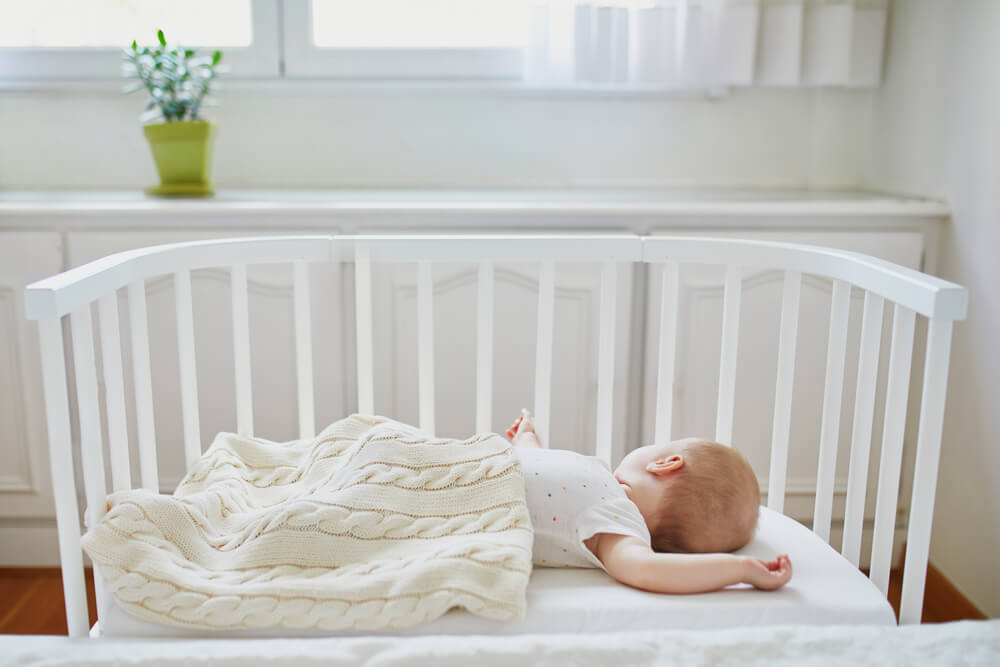
When it comes to choosing between a mini crib and a full-size crib, cost is one of the most important factors to consider. Here we will analyze the cost of both options to help you make an informed decision.
Initial Purchase
The initial cost of a mini crib is typically less than that of a full-size crib. On average, a mini crib costs around $100 to $300, while a full-size crib can range from $200 to $600 or more. However, keep in mind that the price can vary depending on the brand, materials, and features.
While a mini crib may seem like the more affordable option, it’s important to consider that your baby will outgrow it sooner than a full-size crib.
This means you may need to purchase a new bed for your child sooner than you would with a full-size crib.
Long-Term Value
When it comes to long-term value, a full-size crib may be the better investment. While it has a higher initial cost, it can be used for a longer period of time.
Most full-size cribs can be converted into toddler beds, daybeds, or even full-size beds with the purchase of conversion kits.
This means you can use the same bed for your child for several years, potentially saving you money in the long run.
On the other hand, a mini crib can only be used for a short period of time, usually until your baby is around 1-2 years old. After that, you’ll need to purchase a new bed for your child, which can add up in cost.
Overall, when it comes to cost analysis, it’s important to consider both the initial purchase price and the long-term value of each option.
While a mini crib may seem like the more affordable option upfront, a full-size crib may be the better investment in the long run.
Lifespan and Durability
When choosing between a mini crib and a full-size crib, lifespan, and durability are important factors to consider.
You want to ensure that your investment in a crib will last long enough to accommodate your child’s growth and development.
Material Quality
The material quality of the crib is one of the most important factors that determine its lifespan and durability. Full-size cribs are generally made of higher quality materials than mini cribs.
They are often made of solid wood, which is more durable and long-lasting than the engineered wood or laminate used in mini cribs.
In addition, full-size cribs often come with additional features such as adjustable mattress heights, which can extend the life of the crib as your child grows.
Mini cribs, on the other hand, usually have fixed mattress heights, which means that they may not last as long as full-size cribs.
Usage Period
Another factor to consider when comparing the lifespan and durability of mini cribs versus full-size cribs is the usage period. Mini cribs are designed for infants and are generally used for a shorter period of time than full-size cribs.
They are suitable for babies up to around 2 years old, while full-size cribs can be used for up to 3 years or more.
If you plan to have more than one child, a full-size crib may be a better investment as it can be used for a longer period of time.
However, if you have limited space or need a crib that is more portable, a mini crib may be a better option.
In conclusion, when considering the lifespan and durability of mini cribs versus full-size cribs, it is important to consider the material quality and usage period.
While full-size cribs are generally made of higher-quality materials and can be used for a longer period of time, mini cribs are more portable and may be a better option for those with limited space.
Versatility and Conversion Options
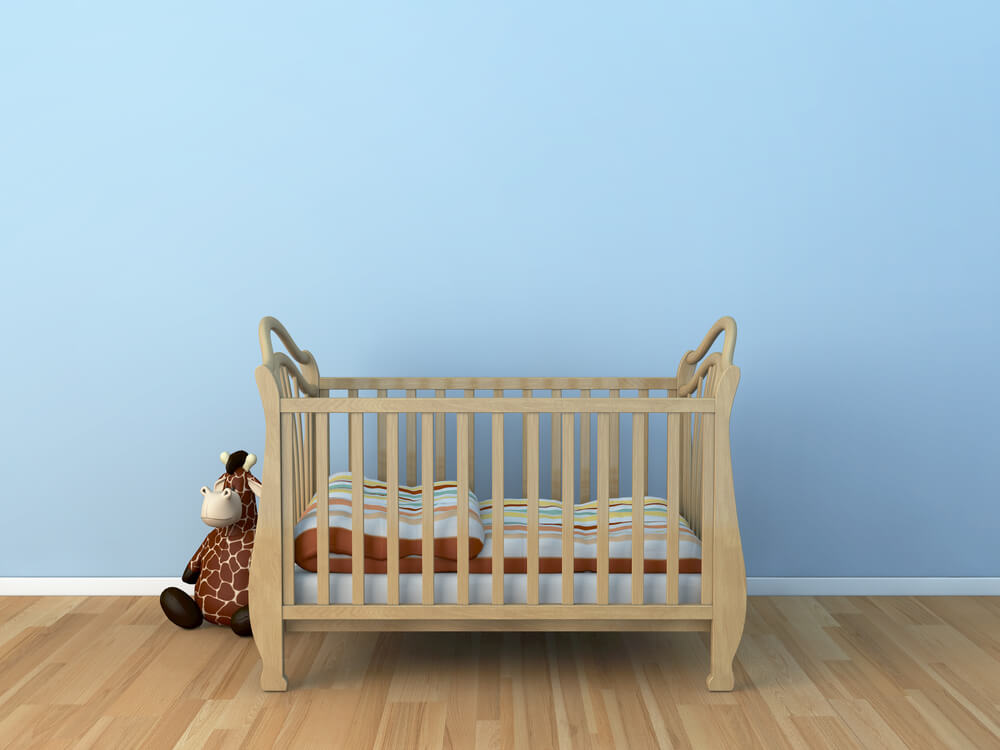
When choosing between a mini crib and a standard crib, one important factor to consider is versatility and conversion options.
Here are some things to keep in mind:
Conversion Kits
Many standard cribs come with conversion kits that allow you to convert the crib into a toddler bed, daybed, or even a full-size bed.
This can be a great investment because it means you won’t have to buy a new bed as your child grows. However, not all cribs come with conversion kits, so be sure to check before you buy.
Mini cribs, on the other hand, usually don’t come with conversion kits. This is because they are designed to be used for a shorter period of time, typically until your baby is about 1-2 years old.
Nevertheless, some mini cribs do have conversion options available, so be sure to check if this is important to you.
Future Use
When deciding between a mini crib and a standard crib, you should also consider your future plans for the crib.
If you plan to have more children in the future, a standard crib may be a better investment because it can be used for multiple children.
If you only plan to have one child, or if you have limited space in your home, a mini crib may be a better option.
Mini cribs are smaller and more portable than standard cribs, so they can be a great choice if you need to move the crib from room to room or if you have limited space in your nursery.
Overall, when it comes to versatility and conversion options, standard cribs have more options available. However, if you only plan to use the crib for a short period of time or if you have limited space, a mini crib may be a better choice.
Comfort and Size

When choosing between a mini crib and a standard crib, comfort, and size are two factors to consider. Here are some things to keep in mind:
Mattress Size
One of the main differences between a mini crib and a standard crib is the size of the mattress. Mini cribs usually require a smaller mattress than standard cribs.
The mattress size for a mini crib is typically around 24 inches by 38 inches, while a standard crib mattress is around 28 inches by 52 inches.
It’s important to note that not all mini cribs use the same size mattress, so be sure to check the specifications before purchasing.
While a smaller mattress may save space, it’s important to ensure that your baby has enough room to sleep comfortably.
Baby Comfort
When it comes to comfort, both mini cribs and standard cribs can provide a safe and comfortable sleeping environment for your baby. However, there are some differences to consider.
Mini cribs are generally smaller than standard cribs, which can make them feel more cozy and secure for your baby. This can be especially beneficial for newborns who may feel overwhelmed in a larger space.
Also, mini cribs are often more portable and can be moved from room to room, making it easier to keep your baby close by.
On the other hand, standard cribs provide more room for your baby to grow and move around. This can be beneficial as your baby gets older and becomes more active.
Additionally, standard cribs often have adjustable mattress heights, which can make it easier to reach your baby and reduce the risk of injury.
Ultimately, the decision between a mini crib and a standard crib comes down to personal preference and the size of your living space.
Be sure to consider the size of your room, your baby’s sleeping needs, and your budget when making your decision.
Frequently Asked Questions
What is the difference between a crib and a mini crib?
A standard crib is larger than a mini crib and can accommodate a growing baby for up to two years. A mini crib, on the other hand, is smaller and more compact, making it a great option for small spaces or parents who want to save money.
How long can a baby stay in a mini crib?
A baby can typically stay in a mini crib until they reach about 18 months old or when they start to outgrow the crib.
It’s important to regularly check your baby’s height and weight to ensure they are still safe and comfortable in the mini crib.
Are mini cribs safe?
Yes, mini cribs are safe as long as they meet the safety standards set by the Consumer Product Safety Commission (CPSC).
Look for mini cribs that have slats that are no more than 2 3/8 inches apart, a firm mattress that fits snugly in the crib, and no drop sides.
What are the downsides of a mini crib?
One downside of a mini crib is that your baby will outgrow it faster than a standard crib. Additionally, mini cribs may not have as many features as a standard crib, such as adjustable mattress heights or the ability to convert to a toddler bed.
Is a mini crib better than a crib?
It depends on your specific needs and circumstances. If you have a small space or are on a budget, a mini crib may be a better option.
Yet, if you have room for a standard crib and want a piece of furniture that will last longer and have more features, a standard crib may be the better choice.
What are the best mini cribs available?
Some of the best mini cribs on the market include the Babyletto Origami Mini Crib, the Delta Children Portable Mini Crib, and the Dream On Me Aden Mini Crib.
Nonetheless, the best mini crib for you will depend on your individual needs and preferences.
